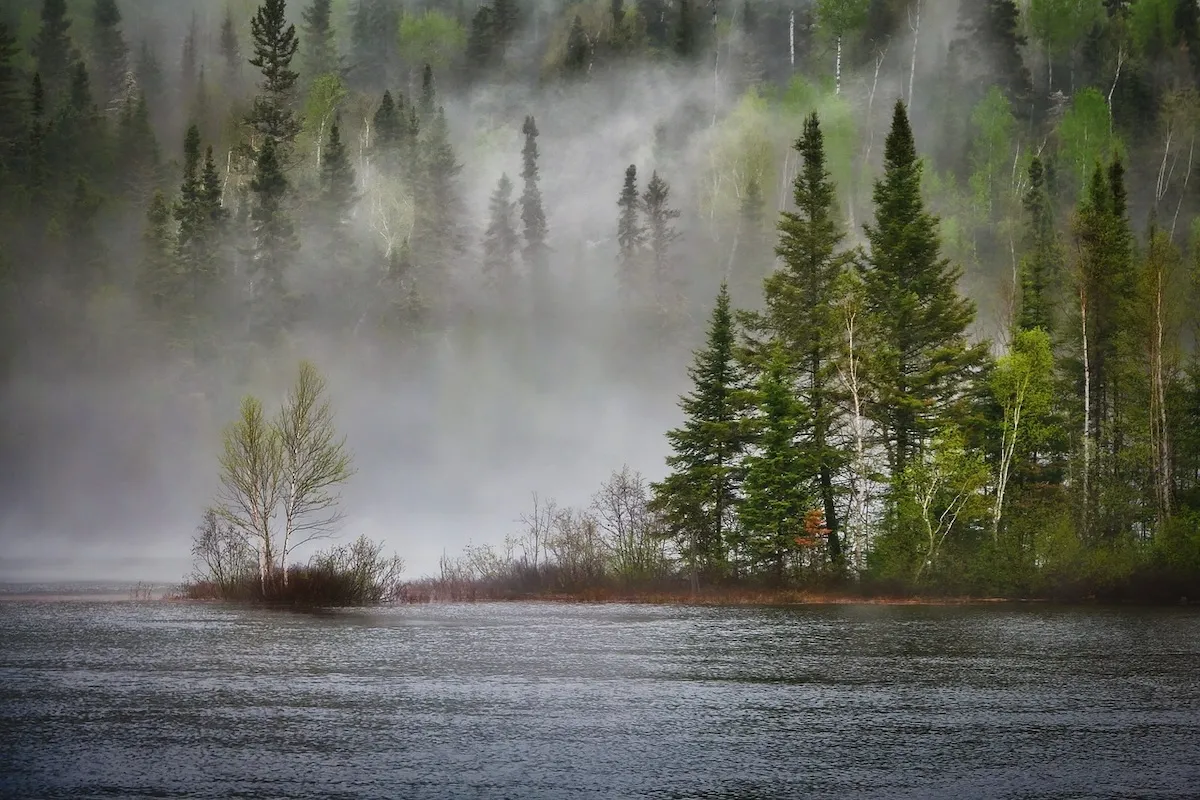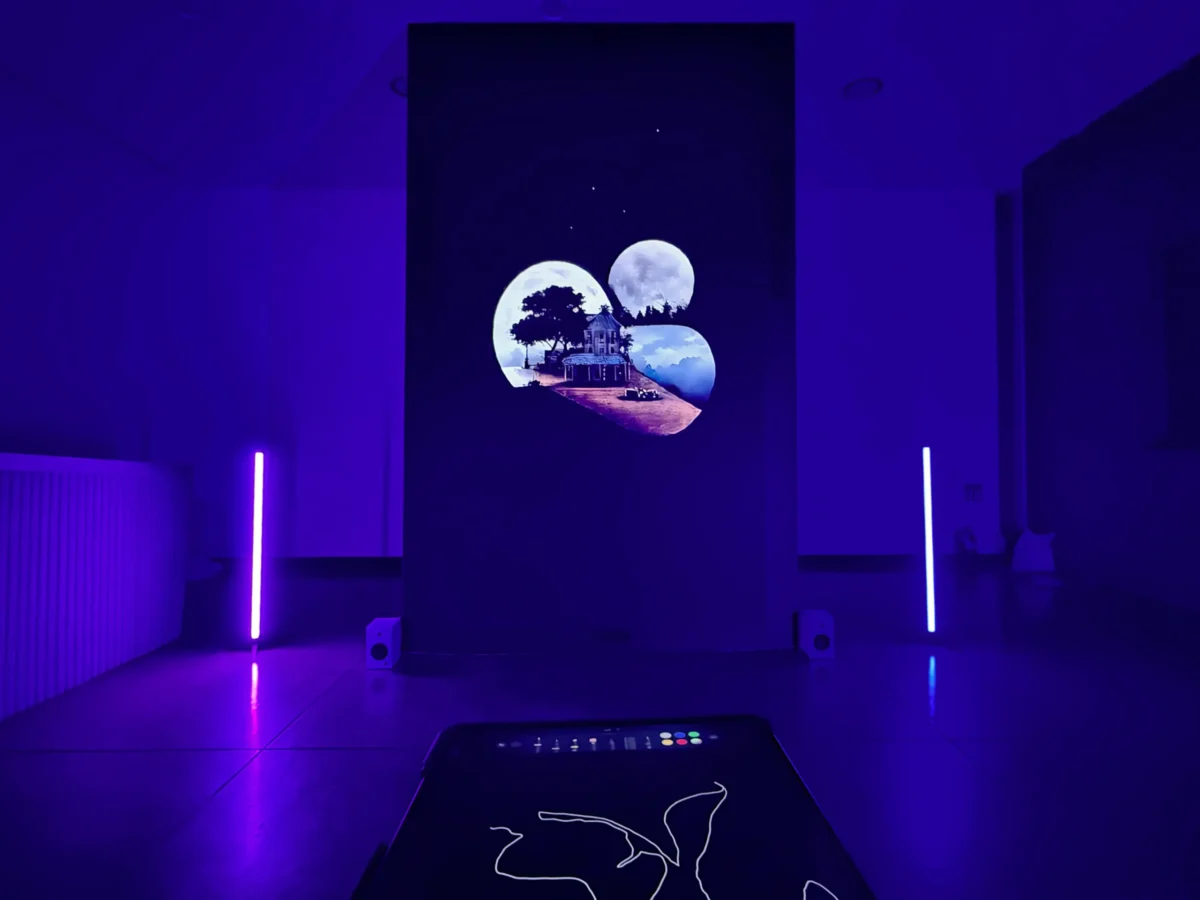|
[People]introduces the future direction of art education that the Art Collider Lab (hereinafter referred to as AC Lab) of the Convergence Arts Center seeks and aims to pursue through people who have worked with AC Lab. |
While working at AC Lab, I discovered various spaces where multiple media can be experimented with and exhibited, such as lecture programs and workshops like Open School and ACA, as well as media walls and AC-CAVE. As an art school student, AC Lab is an intriguing space in itself, as it creates a platform for crossing boundaries and making convergent attempts while fostering a space for experimentation and exchange for students. We met with students who participated in the projects held at AC Lab throughout 2024 to hear firsthand how they experienced and gave meaning to this space.
The interview featured students who participated in the 2024 Spring and Fall ACA education programs and related exhibitions organized by AC Lab: Su-beom Park (Bachelor’s in Fine Arts, Department of Visual Arts), Ji-won Jung (Bachelor’s in Broadcasting, Department of TV, Film & Multimedia), In-young Kim (graduate in Design, Department of Visual Arts), who participated as a student artist in AC Lab’s media wall exhibition project, Sang-hoon Kim (Bachelor’s in Korean Traditional Dramatic Performing Arts, Department of Traditional Arts), who participated in the curriculum-linked educational program, Soo-min Lee (graduate in Composition, Musical Theatre Writing Program) who worked as an intern for a year and contributed to the media wall design, and Su-hyun Lee (2024 Student Council Emergency Committee Representative, Bachelor’s in Art History, Department of Visual Arts), who attended as a representative of the Korea National University of Arts Student Society.
| Learning from Different Art Genres
The interviewees of this article, who participated in various classes, workshops, and exhibitions organized by AC Lab throughout 2024, shared their experiences during the interview. The conversation began with reflections on their experience with AC Lab, where they discussed their personal interests related to their field of study as well as the challenges and frustrations they have encountered as artists. This provided an opportunity to hear a range of perspectives on their experiences.
Through the interview, the focus was on understanding how the classes and workshops experienced at AC Lab personally impacted the interviewees and the significance they found in those opportunities. Despite the diversity of students’ majors, which meant that each had different educational needs, areas of interest, or technical skills, they all shared the sentiment that their experiences at AC Lab exposed them to new insights that would influence their future career paths and academic pursuits.
Sang-Hoon Kim, whose specialized focus is in traditional Korean performing arts, was studying a variety of genres such as Pungmul (traditional Korean percussion), Nongak (farmers’ band music), Talchum (mask dance), and Jultagi (tightrope walking). Last year, they participated in a curriculum-integrated program, organized through a collaboration between the Department of Korean Traditional Dramatic Performing Arts(which is part of the School of Korean Traditional Arts) and AC Lab, where they practiced the traditional lion dance, and also had the opportunity to collaborate with the world-renowned jazz musician Yannick Rieu. For students studying traditional performing arts like Sang-Hoon Kim, the experience of merging traditional Korean performances with contemporary music was a significant and valuable opportunity.
“Participating in extracurricular courses allowed me to directly experience how traditional arts can merge with various genres, transcending the boundaries of art. This experience has sparked my desire to continue exploring such cross-genre collaborations in the future, not only with traditional arts but with other fields as well.
One of the highlights was that, through our study of traditional arts, we had the opportunity to learn how to analyze Western musical scores. Additionally, having the chance to collaborate with jazz musicians provided valuable insight into how to approach and work with jazz artists in the future, specifically in terms of the processes and steps involved.” (Sang-Hoon Kim)
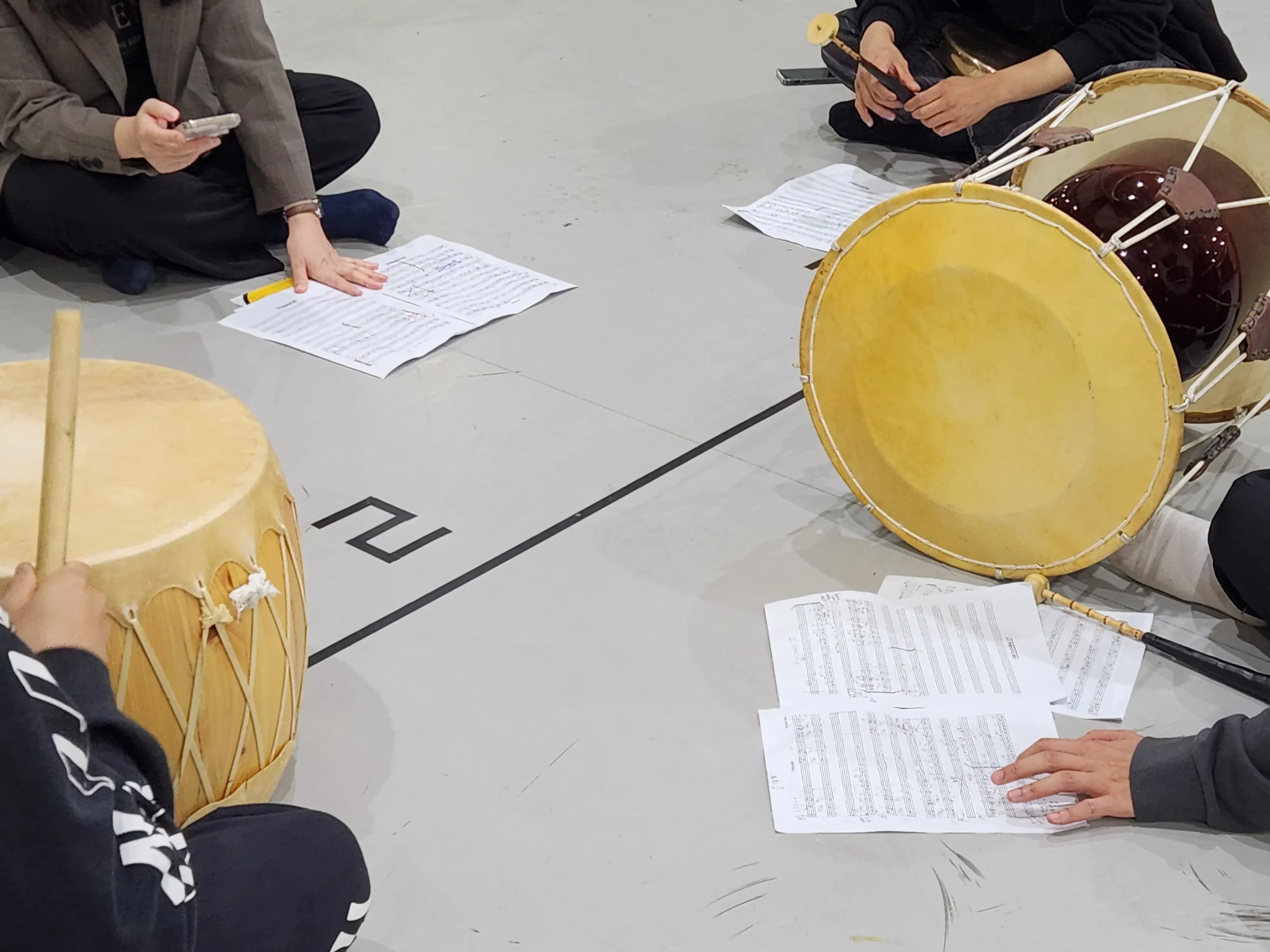
Students analyze the sheet music of Yannick Rieu’s ‘Passage’ and try to match the rhythm.
I was curious to know if there is an increasing trend of convergence attempts within traditional arts, and if there are many opportunities to experience different genres in collaboration with other departments or programs.
“There are classes in the Department of Traditional Performing Arts where students can collaborate with students from other departments by year. We have the most interaction with the Theater and Music departments. It’s really valuable to take classes with peers from different majors and learn a lot while preparing for finals. However, I think it would be great to have more opportunities to work with departments that don’t usually collaborate, like the Film Department. For example, I think it would be fun if we could incorporate video projections during our performances. In this sense, while collaboration is important, I also think that learning about video production ourselves could add more variety to our performances.” (Sang-Hoon Kim)
On the other hand, I was curious about Ji-Won Jeong , who is majoring in Broadcasting in the Department of Film, TV & Mutimedia. Given the nature of the medium, there might be more opportunities to learn about and explore various art forms compared to stage arts.
Ji-Won Jeong, who is studying documentary as part of her major in Broadcasting, shared that she is more interested in experimental videos rather than conventional documentaries, while also studying related topics such as journalism, theory, and history. She came across the class-linked exhibition for the Soundscape workshop, which was the theme of the first semester of ‘Art Collider Academy(ACA)’, and decided to apply for the next semester of ACA.
“I’m really interested in artistic and experimental videos, especially sound-related topics like noise music and electronic music, which have been personal interests of mine. I was also interested in the Department of Music Technology.
However, since audio-visual works often blend multiple genres, I don’t think the classes offered by the music department align with my interests. On the other hand, the themes explored in the film or art departments are also somewhat distant from what I focus on. In that sense, ACA was a great opportunity for me to practically learn something in my area of interest, especially since it involved learning Ableton Live.” (Ji-Won Jeong)
In this regard, the discussion also touched upon the expansiveness of the themes explored by the Open Access School. Soo-Min Lee , who is studying composition in the music theater writing program, mentioned that through her internship, she became aware of the importance of various artistic themes and discourses she encountered.
“I was most surprised by the Open Access School program, especially in terms of its thematic aspects. The topics covered in the sessions are things that aren’t easily encountered in regular classes or daily life. Many of the concepts discussed here were new to me. I also feel that there are people who come from outside to learn about these topics, which I think is proof that we are dealing with new and unique themes.” (Soo-Min Lee)
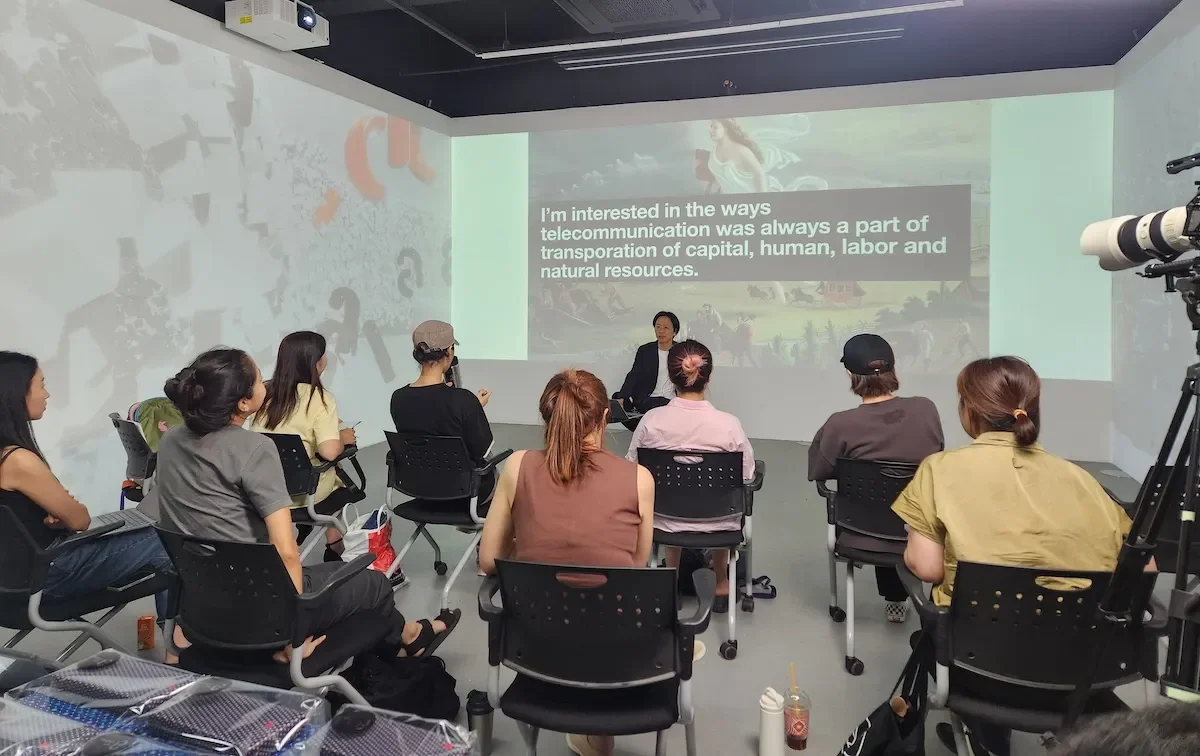
The on-site lecture program, held in five sessions, based on the theme of ‘The Commons’
| Platforms as New Opportunities for Creation
The meaning of art has changed over time, and the way art is defined can vary from person to person. However, at least in the case of contemporary art, it has played a role in questioning the paths and meanings art should take. In this sense, the tendency for boundaries between art genres to disappear is not a recent development. From this perspective, it is only natural for students who have an interest in art at its most foundational level, and who choose to major in it, to also be interested in and seek to explore other forms of art and techniques. The interviewees seemed to express a desire for AC Lab to create more opportunities, in the form of education and workshops, that can support students in their attempts at genre fusion and breaking boundaries.
In this regard, what kind of place was AC Lab as a platform where various technologies and techniques could be learned? I was also curious about the accessibility and necessity of the infrastructure that AC Lab has established, beyond just the education provided. I first asked Sang-Hoon Kim, who had used the creation studio in the previous semester’s class, whether the installation of separate studios for each department was a meaningful attempt.
“Since the studio is a space where recording could also take place, we had the opportunity to work on song compositions, record, stage performances, and create videos using filming and editing techniques. We submitted the final product for our final exam, but honestly, these are skills we hadn’t learned before. Learning recording, filming, and editing in the studio was really helpful in exploring different ways of creating.” (Sang-Hoon Kim)
“I really enjoyed the classes, and not only because the ACA curriculum was great, but I also thought the facilities were excellent. We had classes in AC-CAVE, which is a space where three-way projections are possible, so I felt like it opened up a lot of opportunities for experimentation.” (Ji-Won Jeong)
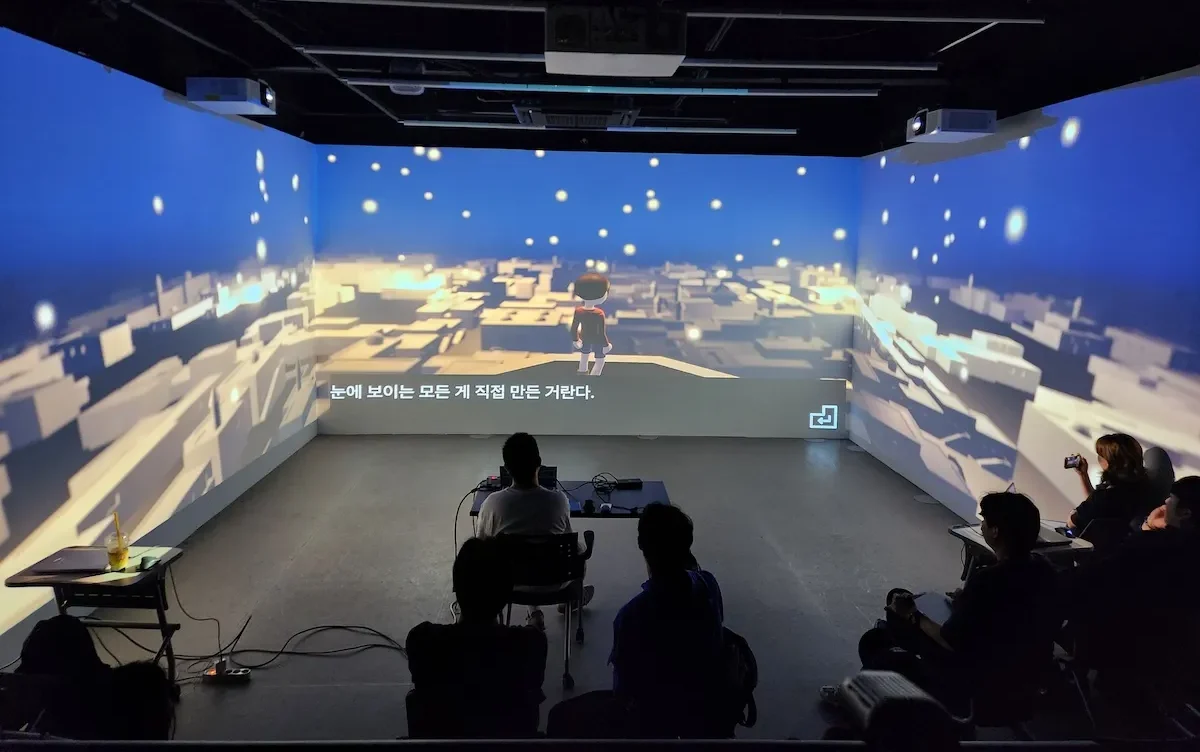
AC-CAVE
In this regard, the media walls installed by AC Lab as part of the 2024 Connected Campus project serve as spaces where tangible outcomes of artistic activities, such as exhibitions, can be displayed. These media walls are set up at the Lee Eo-ryeong Arts Theater, the student cafeteria, the library, and the annex courtyard media square, playing the role of a digital platform for interactive media experimentation accessible to all members of the university. It serves as a digital platform for interactive media experiments for all students.
In-young Kim, a design major in the Department of Visual Arts, participated in the installation and exhibition of the media walls while studying interaction design and is set to graduate this February.
“Through the AC-CAVE creative lab two years ago, I first connected with AC Lab, and recently, I had the opportunity to participate in a project involving the installation and exhibition of the media walls. As we prepared for this project and successfully wrapped up the exhibition at the end of the year, I gained a lot from the experience.
As a design major, I was able to learn aspects I hadn’t been familiar with before. I believe the process of participating in and learning from such activities played a role in my decision to shift my career focus towards media art. Through AC Lab, I was able to have an experience that is quite rare for design students.” (In-Young Kim)
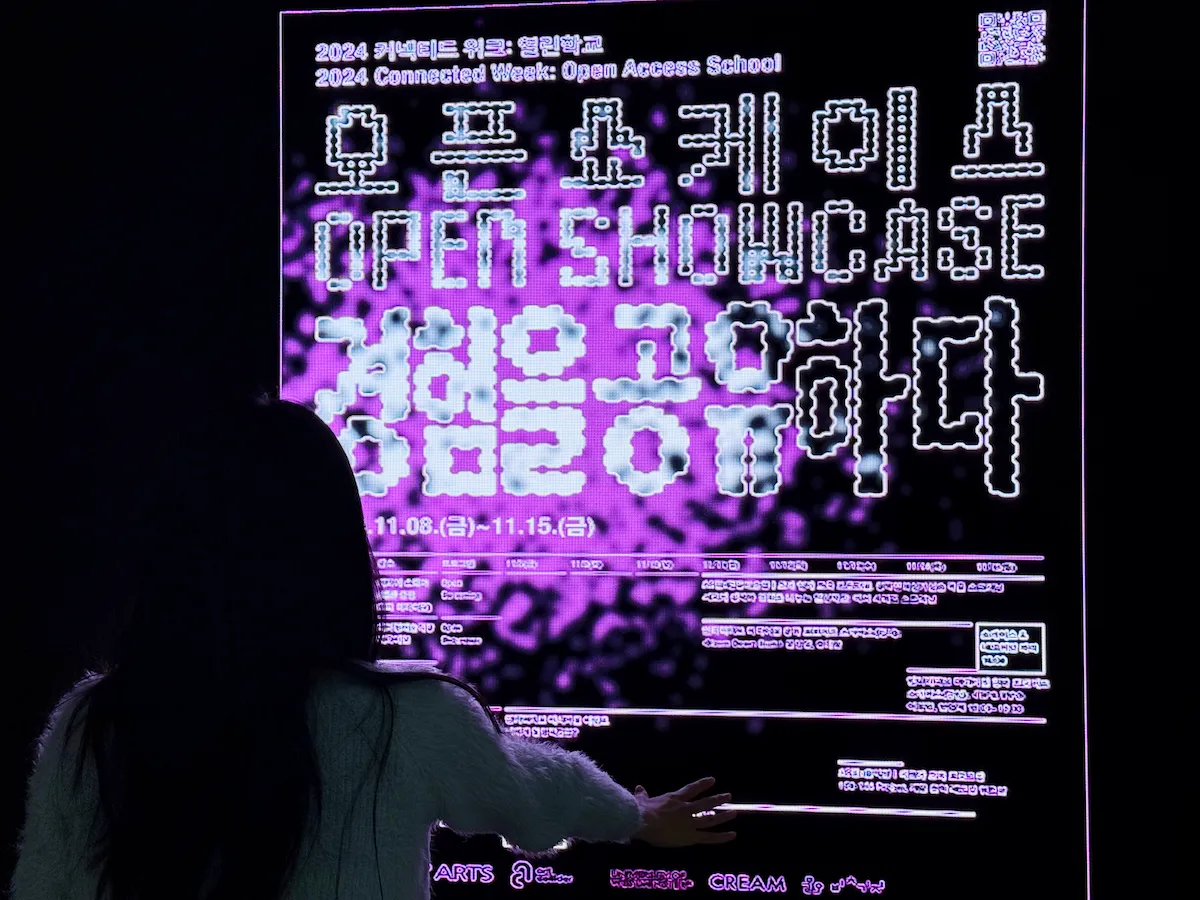
“Bloom Boom Bash!”, In-Young Kim, Taey-Yng Yoo
Soo-Min Lee , who worked as a student assistant at AC Lab for a year, is also one of the participating artists in the media wall exhibition installed in the student cafeteria. As a student majoring in the Music Theatre Creation Collaborative Program, Soo-Min Lee ventured into the completely different field of design, where they directly planned and executed the design.
“I was in charge of planning and designing the characters on the media wall. With the platform of the media wall, I believe new interactions took place in spaces like the student cafeteria and other areas of the school. Since it was an experience in a field entirely different from my major, I was really impressed by how technology allowed us to create something fun.” (Soo-Min Lee)
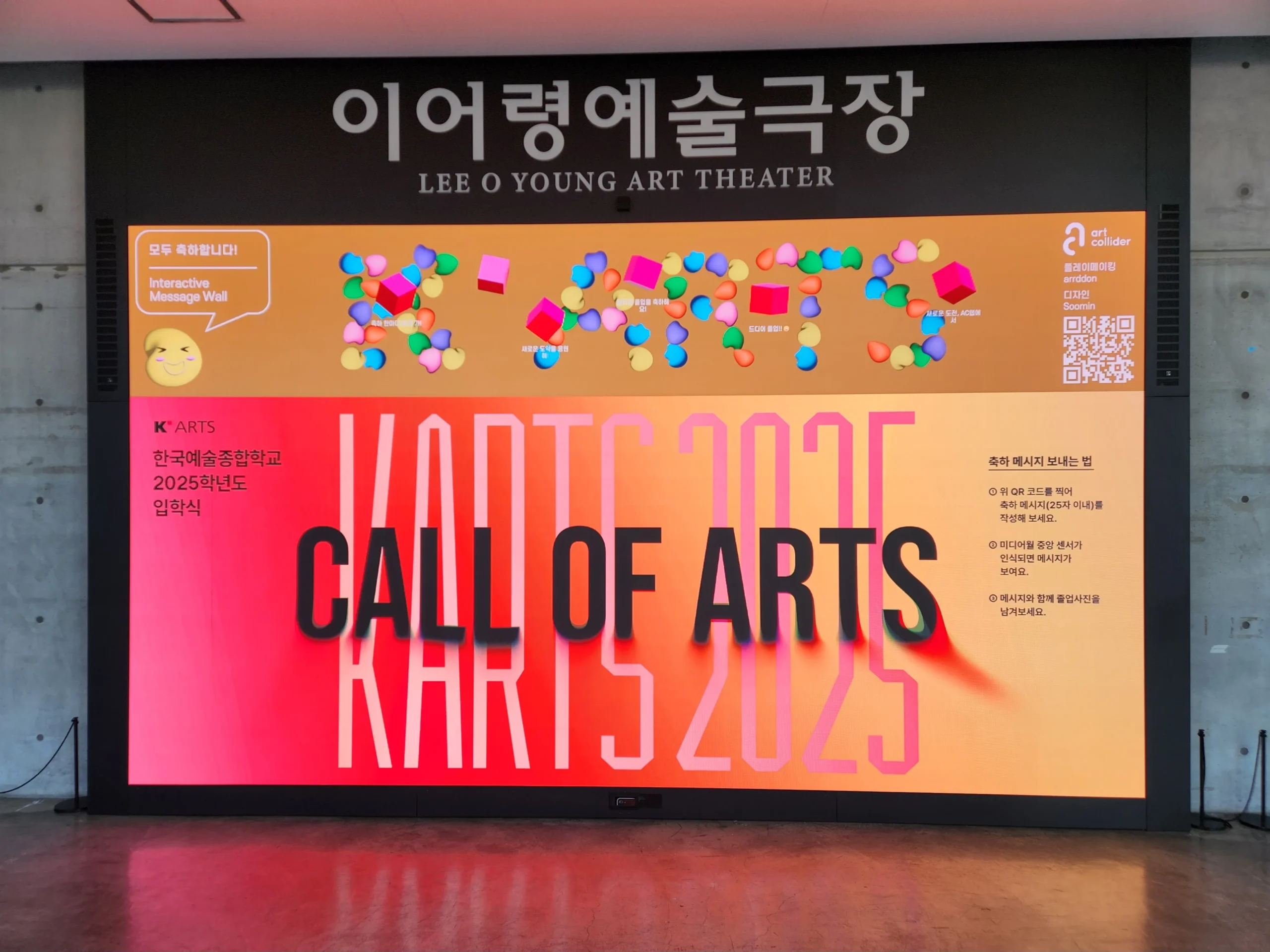
Interactive message wall used as a photo zone for the entrance and graduation ceremonies
| From classes to exhibitions, spaces experienced as an artist
Unlike In-Young Kim and Soo-Min Lee, who were directly involved in the planning and design of the media wall installation, students participating in ACA each semester learn methodologies through classes, receive guidance from their instructors, and create their own works, presenting the results through a long-term process as an exhibition. What did Su-Beom Park and Ji-Won Jeong, who participated in the 1st and 2nd semesters of ACA in 2024, learn and experience through this process?
“First of all, having the opportunity to exhibit my work in such a large space is really rare. Especially having my work displayed on a three-sided projection and the process of audience members coming in to view it, was a valuable learning experience as both a student and an artist. I’m grateful for this opportunity, as it’s not something easily attainable.” (Ji-Won Jeong)
“When I first took the class, my main goal was to learn about the medium itself—how things are made, how sound is used, and so on. The concept of soundscapes was also new to me. Then I learned how to use handheld recorders and microphones. These kinds of lessons were necessary, and I felt they were a great fit for me. Oh! While preparing for the exhibition, we even soldered to build amplifiers. Since everything was new, I ended up doing more research on my own. Also, it wasn’t just any small gallery, but an external exhibition at a significant venue like the Culture Station 284. Personally, it was a great and important experience, and I believe it was a really helpful experience for students majoring in the arts.” (Su-Beom Park)
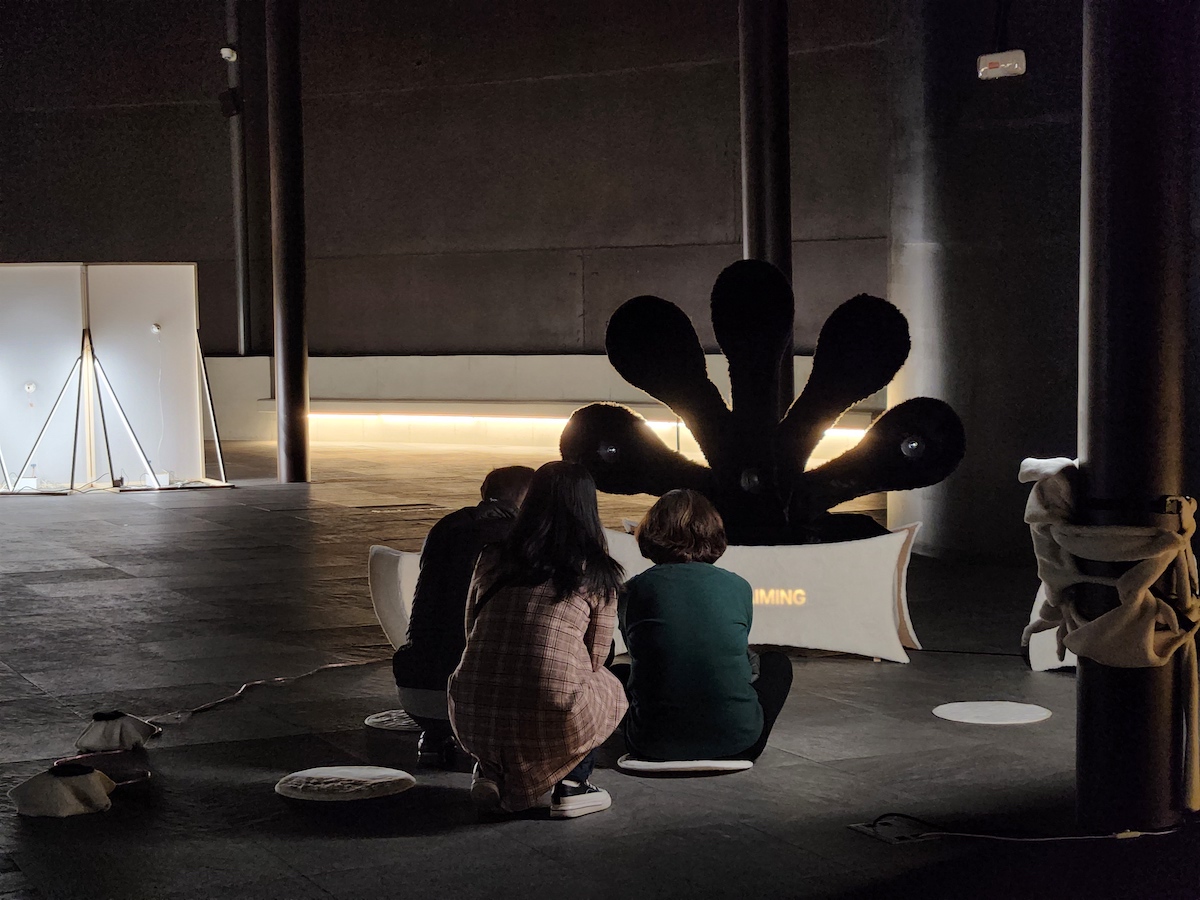
The artwork by Su-beom Park exhibited at the oil tank culture park
I was curious if there were any challenges in creating work for the exhibition using the topics and techniques they encountered for the first time.
“I mentioned that my interest is in sound, but the truth is, it was my first time really working with sound. Up until then, when I thought of sound, it was usually related to background noise in videos or something confined to visuals. But for the first time, the class focused on ‘sound’ itself, and I found it fascinating. In that sense, the difficulty came in dealing with sound not as a background element for video, but as a genre in and of itself. What should I create for ‘sound’ work, and where should I focus? I think I had a lot of curiosity about the genre itself and spent a lot of time contemplating the themes I could explore within it.” (Ji-Won Jeong)
“As an undergraduate, the idea of having an exhibition was quite challenging, even though I’m a majoring student. There were times when I wasn’t sure how to proceed. Even students from the Department of Sculpture often struggle with exhibition installations. Since the space is so vast, I was worried about how to use it effectively.
During this process, the artist Jun Kim, who taught the class, provided feedback from a perspective and context different from what I had experienced in school. He asked a lot of practical questions about how I viewed my work. The six-month process of communicating with fellow students, AC Lab instructors, and Jun Kim really helped me develop my work and gave me an opportunity to reflect deeply on my own creative process.” (Soo-Beom Park)
| A Platform for Mutual Learning
A common theme shared by all interviewees was the need for a platform where students can collaborate and engage in exchanges. While the school environment and educational characteristics often lead students to focus on individual work and study, actual projects frequently require the application and fusion of various fields. Therefore, there is a need for a space where students from different majors can share and collaborate on their work.
“Even though art is often seen as an individual endeavor, various genres are needed simultaneously. For example, one of my classmates from the broadcasting and video major is a dancer who creates dance films. In the case of visual arts, even though it’s mostly image-based, video or photography is necessary when documenting work. In this sense, students majoring in different fields often need each other’s expertise. It would be great if AC Lab could create more opportunities for such collaborations and mutual learning.” (Ji-Won Jeong)
“I wanted to explore more experimental fields or genres that I hadn’t tried before, rather than sticking to the design curriculum. For example, while there are many opportunities to work in the video field, I still think there are significant barriers. That’s why I was excited about the programs at AC Lab. I was able to challenge myself in a completely unfamiliar area, and luckily, the developer who supported my project helped ensure everything went smoothly. I would love to discuss these experiences with other students, but due to the nature of my major, I often work individually, so I haven’t had many chances to meet others. If there were a space where students could try new things together, it would be very helpful for everyone.” (In-Young Kim)
“Similarly, in the Department of Fine Arts, there tends to be a lot of individual projects. We don’t often have classes or assignments that involve collaboration or sharing ideas with others. What I liked most about ACA was the opportunity to exchange feedback with other students and to adjust and refine our ideas together. Even if we made mistakes, it felt like there was a lot of resilience in the group, and we were able to take on very experimental challenges. It was also fascinating to see the different perspectives and directions that people from different majors brought to the table.” (Soo-Beom Park)
Many interviewees mentioned that, due to the nature of their majors, there aren’t many opportunities to interact with students from other artistic fields. However, it seems that most majors face similar challenges. This could be due to the nature of the arts, where students often work or practice alone, except in a few limited areas, or it might be a characteristic stemming from the school’s atmosphere, educational goals, and curriculum focused on specialized training. The issue that needs consideration is that, contrary to this school culture, there is an increasing trend of breaking down boundaries between artistic genres.
“After last year’s festival, I met students from the Dance Department and the Traditional Arts Department during the after-party. I witnessed Dance Department students participating in a graduation performance of Traditional Arts students and creating a stage together. It made me think that if there were programs where people from different majors could collaborate, share, and learn from each other, it would be really helpful.” (Soo-Hyun Lee)
What is needed for the space to foster convergence?
So, what is needed for the school to become a place where convergent attempts can take place? What kinds of synergies might arise when students with different majors and interests come together to create?
“For example, even if we are all learning sound, I think each major would approach it from different perspectives. I was thinking that it would be great if there were a program where students from different backgrounds could mix and collaborate. Also, one of the strengths of our school is that it brings together students who have studied their majors for a long time or are excelling in them. It would be great if we could make use of that and collaborate with each other.” (Soo-Hyun Lee)
Kim Sang-hoon, who experienced these attempts through extracurricular activities, mentioned that during the course, he began to wonder if traditional arts could blend more with popular music.
“For example, I thought it might be interesting if Western instruments like piano, violin, and bass, along with traditional instruments, could collaborate, with the janggu leading or creating variations with traditional instruments. Since jazz is such an improvisational genre, when we were performing, Yanick Rieu, the saxophonist, added variations alongside us, which was a truly fascinating experience.” (Sang-Hoon Kim)
Finally, Soo-Hyun Lee also made suggestions about how theory and practice could meet appropriately, both within practical courses and theoretical ones.
“I hesitated to participate in workshops or classes like ACA because I was worried that I wouldn’t be able to keep up as well as the arts majors. However, when thinking about the convergence of different arts and genres, I think we could consider workshops that focus on collaborative research in theory, or studying and presenting interdisciplinary topics. There is also a significant contribution that theory students can make in the field of planning. I believe it’s time to think about the direction of convergence from various approaches.” (Soo-Hyun Lee)
As the interviewees mentioned, the realm of convergence arts is incredibly diverse. Convergence is not just the meeting of one genre with another; it could also be the fusion or encounter of Western and traditional instruments, the integration of theory and practice, or entirely new attempts that enable different creative methods or themes.
What was most notable was that these encounters themselves can serve as opportunities for mutual learning, where feedback is exchanged and new questions are raised. For convergence attempts to flow between students with different majors and for the school to become such a space, much contemplation will be needed in the future. However, I hope that this process of listening to these stories will serve as a starting point, and more ideas will emerge. With that, I conclude this interview.
/ written by Gian Kim (Korea National University of Arts)

